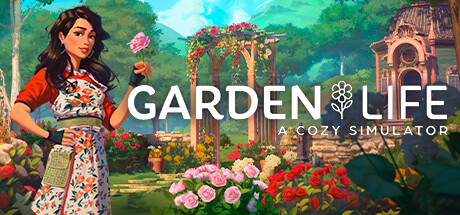While we're still working on the first patches, the first of which should arrive on PC this week, we'd like to tell you more about the technology we've put in place to develop flowers and plants in Garden Life.
Enjoy your read!
Behind the scenes look at our flower growth system
It’s a cold day in November 2023. The developer team at stillalive studios in Innsbruck, Austria, are working on the release candidate of Garden Life. Garden Life is a cozy gardening simulator. A game about planting flowers, enjoying them grow and decorating the garden to your heart’s content. With a deep focus on non-punishing gameplay, a light story, and a stunning, animé inspired art style.
At stillalive studios, we take pride in our expertise in simulation games and their underlying technology. As we started fleshing out the idea of a gardening game, we thought it should be easy enough for a company that has people with a degree in quantum physics. But could we create a gardening game that hid all the simulation complexity and love for data structures under a cup of warm tea on a cold winter’s eve?

Our Producer Is A Florist
It all starts with Kay, our producer. She’s the one that manages the Garden Life project at stillalive. Kay knows a lot about flowers as she was a proper florist in her past professional life. Putting together flower arrangements for festivities and weddings. For her craft, Kay won prestigious Gold and Silver medals at the world’s famous Chelsea Flower Show in London. This knowledge had to be put to good use in a cozy gardening game. With her on the team, we had one of the puzzle pieces down.

Why Does Garden Life Need A Lot of Tech, Anyway?
Computers are not very good at randomness: the little quirks and irregularities that make nature so diverse and interesting. When artists create 3D models, the computer is always going to re-create those models exactly. Identical copies down to the vertex. We couldn’t imagine anything less cozy than a garden full of identical storm troopy flowers, growing in lockstep. And this is where our tech department set out to find ways of breaking these patterns. Adding randomness and quirks back into the cold determinism of computer processors.
Flowers often only play a background role in games. With grass and flowers only being represented as quick texture shaders or 2D images to please peripheral vision. But in a gardening game, flowers are front and center. They need to look stunning. One of our design goals was therefore to make every flower look unique. So much so that a full garden of flowers would look natural, as in real life. No copies. No storm troopers. No tricks.

Early tests from our plant growth system.
This Is Where Our Sim Background Shines
Looking at above growth animation it becomes clear our flowers are not static 3D models. Every flower model is generated on-the-fly. Follow the algorithm / recipe:
- It starts in the ground, where the first stem segment is generated and grows.
- When the segment is finished, a new segment is spawned.
- The growth direction for the new segment gets a kick in a random direction so the stem does not grow in a straight line.
- At every new segment and depending on the flower, there is a random chance that a leaf grows out of the stem. Or the stem splits up into 2 segments.
- The more segments the plant spawns, the bigger the chance to produce the final flower at the top, finishing the growth process.
- Depending on the flower type, the top gets another kick in a random direction for good measure.
This simple recipe allows for so much variation and produces organic, beautifully looking flower beds. Every flower has leaves at different places. Some stems are shorter, some longer, with random variations in growth direction here and there.

Behind the scenes look at our flower growth system.
To realize the variety of flowers we have in the game, every specimen has a slight variation of this recipe. How big and long are the stem segments? How straight, interwoven? How many segments can there be, determining the total height of a plant. And while sunflowers grow very tall and have one stem, Hellebores grow in small bunches, and Roses go all-in on the bushy, entangled structure.
As mentioned above, computers are not very good at coping with randomness. While there are tricks to make hundreds of identical models run smooth on today’s GPUs, with high frame rates and all, it was a long and winded road to optimize performance for on-the-fly generated 3D geometry. We’re very happy with the outcome! Together with our animé inspired art style, Garden Life simply looks gorgeous and promises many hours of relaxing gameplay.

Our natural garden.
Warm whishes,
The Garden Life team ????
Join-us:
Garden Life FacebookGarden Life TwitterGarden Life InstagramGarden Life DiscordNacon TikTok
